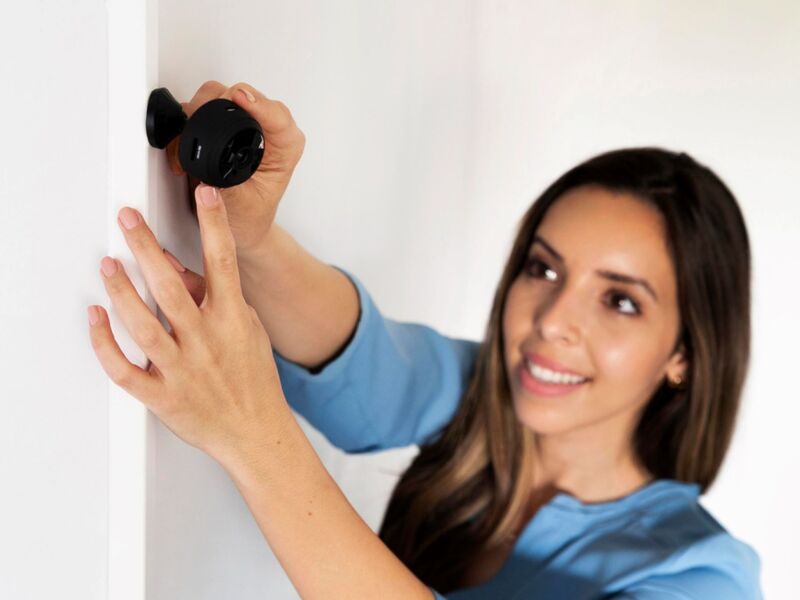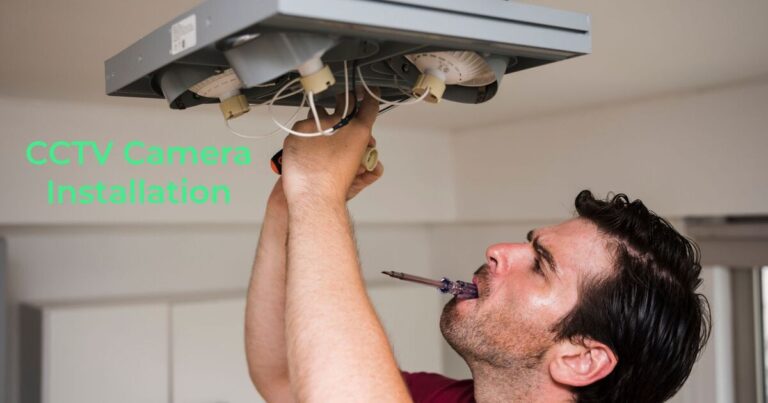
In an era where technology plays an important role in shaping our daily lives, home security has witnessed a significant transformation. Among the number of advancements, Closed Circuit Television (CCTV) cameras have emerged as a keystone in safeguarding our homes. Join us as we delve into the realm of cutting-edge technology, exploring the functionalities, features, and designs that make these CCTV cameras stand out.
As we unwrap the layers of innovation, we will showcase the latest trends in CCTV cameras, from smart integrations and artificial intelligence capabilities to polished designs that blend seamlessly with your home aesthetics. Our goal is to empower you with knowledge, helping you make informed decisions to create a secure haven for you and your loved ones.
Dome Camera
Dome cameras are characterized by their unique dome-shaped housing, which not only adds to their Unnoticeable presence but also strengthens them against tampering.
The installation of dome cameras typically involves installing them on ceilings. This strategic placement allows these cameras to provide a wide field of view, enabling them to effectively cover a substantial area for surveillance. The Heightened position on the ceiling allows for comprehensive monitoring, making dome cameras suitable for applications where capturing a large expanse is crucial, such as in retail spaces, offices, or other environments requiring extensive coverage.
Dome cameras are best suited for indoor surveillance in environments such as retail stores and offices due to their well-crafted and unassuming design. In retail settings, these cameras seamlessly integrate into the interior, discreetly providing surveillance without distracting from the shopping experience. This unnoticeable presence promotes a sense of security for customers and employees, allowing them to go about their activities without heightened awareness of surveillance.
Similarly, in office environments where a professional and clean aesthetic is crucial, dome cameras offer advantages. Their sleek design allows them to complement the decor while ensuring comprehensive monitoring of the workspace. The inconspicuous nature of these cameras contributes to maintaining a productive and focused atmosphere within the office setting.
Beyond functionality, dome cameras are chosen for their ability to blend seamlessly with various architectural styles and interior designs. This versatility makes them an excellent choice for environments where maintaining a unified and visually appealing appearance is imperative. Whether installed in retail stores, offices, or other public spaces, dome cameras strike a balance between effective surveillance and aesthetic integration, ensuring that security measures enhance rather than compromise the overall look and feel of the monitored area.
Bullet cameras
A bullet camera is a type of surveillance or security camera that is cylindrical or bullet-shaped in design. It is a popular choice for outdoor applications due to its compact size, ease of installation, and versatility. The name “bullet camera” is derived from its shape, which resembles a bullet or a small cylinder.
Bullet cameras are outdoor surveillance devices designed for durability and flexibility. Key features include weather resistance with protective casings, day/night vision using infrared LEDs for 24/7 monitoring, varifocal lenses for manual zoom and focus adjustments, high-resolution imaging (HD, 4K), wide-angle views for comprehensive coverage, motion detection for alerts, and remote monitoring through dedicated apps. Their easy installation, often wall or ceiling-mounted, improves user convenience and adaptability.
PTZ Cameras (Pan-Tilt-Zoom)
PTZ cameras, which stand for Pan-Tilt-Zoom cameras, are a type of surveillance camera with the ability to pan (move horizontally), tilt (move vertically), and zoom in on a subject. These cameras are widely used in various applications, including security, surveillance, video conferencing, and live event broadcasting.
Pan-tilt-zoom (PTZ) cameras offer versatile surveillance capabilities with horizontal (pan) and vertical (tilt) movements, covering a broad field of view. Equipped with optical zoom for clear magnification, these cameras often feature preset positions for automated monitoring and can swiftly and precisely track fast-moving subjects. Remote control, whether through a joystick or software, enables flexible operation from a distance. Advanced models may boast automatic tracking, following objects or people within their range. Integration into larger security systems, weather-resistant designs for outdoor use, and a year-round reliability make PTZ cameras a comprehensive solution for dynamic surveillance needs.

Wireless cameras
Wireless cameras, also known as Wi-Fi cameras or IP cameras, are devices that can transmit video and audio data wirelessly to a receiver or a network. These cameras are commonly used for security surveillance, home monitoring, and various other applications.
Wireless cameras use technologies like Wi-Fi for remote connectivity, eliminating the need for physical cables between the camera and monitoring devices. While the video transmission is wireless, these cameras often require a power source, with options ranging from standard outlets to battery power. Installation is typically simpler than wired alternatives, involving user-friendly setup processes. Users can remotely monitor camera feeds through dedicated apps on mobile devices, receiving alerts and managing settings. Security is essential, with encryption protocols like WPA2 ensuring protection against unauthorized access.
Wireless cameras come in various resolutions, from standard to 4K, and offer features such as night vision, motion detection, two-way audio, and PTZ capabilities. Storage options include cloud and local storage, with some models integrating seamlessly into smart home systems compatible with platforms like Amazon Alexa, Google Assistant, or Apple HomeKit.
Day/Night cameras
Day/Night cameras, also known as day/night vision cameras or simply day/night CCTV cameras, are specialized surveillance cameras designed to capture high-quality images in varying lighting conditions, including both daytime and nighttime scenarios. These cameras are commonly used in security systems to monitor areas 24/7.
Day/night cameras incorporate several key features to optimize image capture in varying lighting conditions. Equipped with infrared (IR) illumination through built-in LEDs, these cameras automatically activate in low-light or nighttime situations, enabling clear imaging even in complete darkness. Additionally, they boast low light sensitivity, relying on advanced sensors to capture usable images during transitional light periods.
The cameras seamlessly switch between color mode in daylight and black and white mode in low-light conditions through automatic mechanisms based on ambient light or photocell triggers. Image sensors such as CCD and CMOS play a pivotal role in ensuring high-quality image capture. Some cameras also feature Wide Dynamic Range (WDR) technology for balanced exposure in scenes with diverse lighting, while varifocal lenses provide flexibility in adjusting the focal length for different surveillance scenarios. Users may further tailor operations with manual control over day, night, or automatic modes based on specific surveillance needs.

The future of CCTV cameras for home security
The future of CCTV cameras for home security promises an integration of advanced technologies, catering to the growing demand for intelligent and convenient surveillance. Artificial Intelligence and machine learning will empower these cameras to analyze and respond to real-time events, distinguishing between normal and suspicious activities. Higher resolution and improved imaging capabilities will provide homeowners with clearer, more detailed footage for enhanced identification. Wireless and battery-powered options will make installation more flexible, while cloud storage and remote access will enable users to monitor their homes from anywhere.
Privacy features, such as facial recognition opt-outs and encrypted communication, will address growing concerns in this domain. Integration with other security systems, advanced sensors for environmental monitoring, and customization options will make these systems more comprehensive and user-friendly. As technology advances and costs decrease, the future of home security CCTV cameras appears to be one of increased sophistication, accessibility, and integration within smart home ecosystems.
As we conclude our journey into the trending CCTV cameras for home security, it’s evident that the landscape of home surveillance has evolved significantly in recent years. The diverse range of options available caters to the varying needs, preferences, and technological requirements of homeowners.
From the sleek and discreet indoor cameras that blend seamlessly with home decor to the robust outdoor cameras equipped with advanced features like night vision and motion detection, there’s a perfect fit for every household. The integration of smart technology has further elevated the capabilities of these surveillance systems, allowing for remote monitoring and control through mobile applications.
Ultimately, the choice of a CCTV camera for home security depends on individual needs and preferences. Whether it’s a wired system for maximum reliability or a wireless solution for easy installation, the market offers a profusion of choices. To know more contact Datalife.
Exploring Varieties:5 Trending CCTV Cameras for Home Security Read More »










